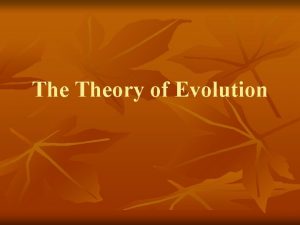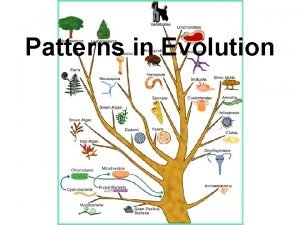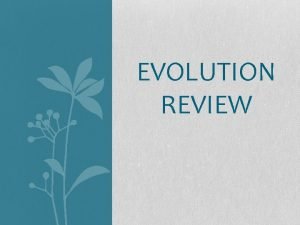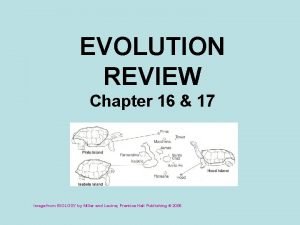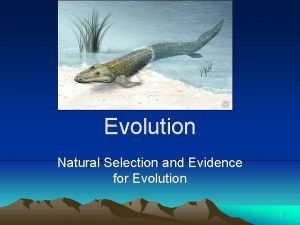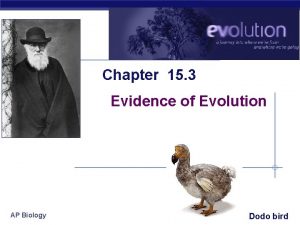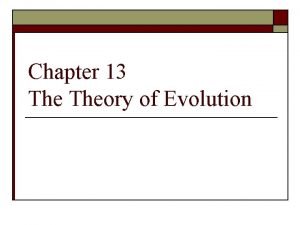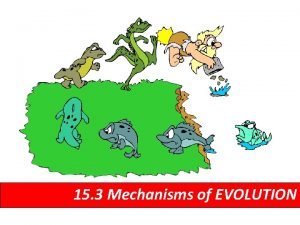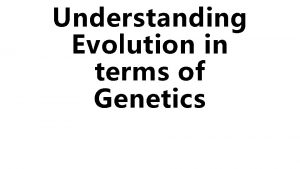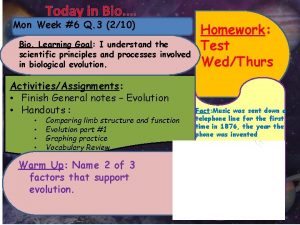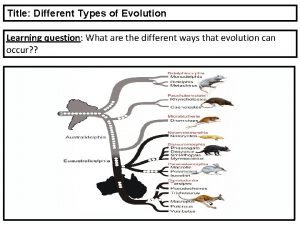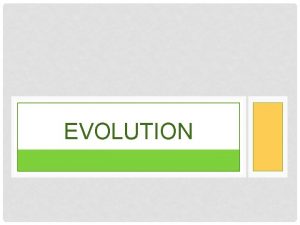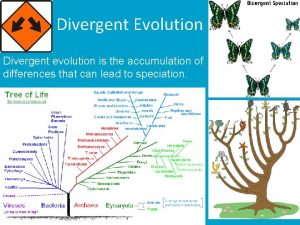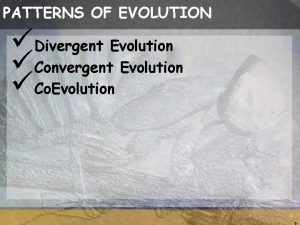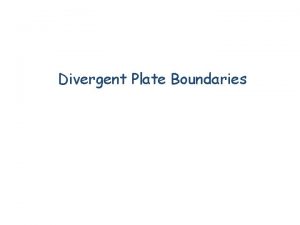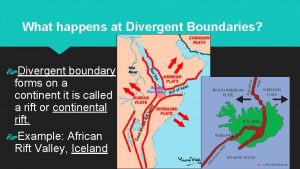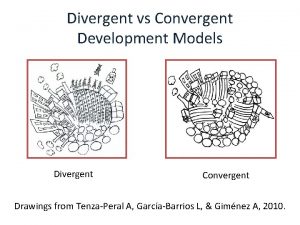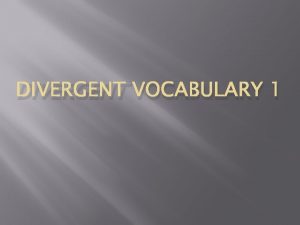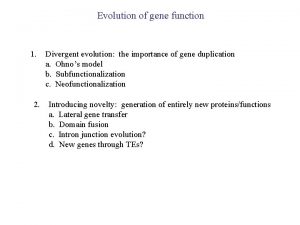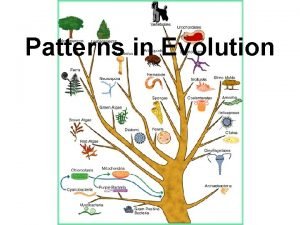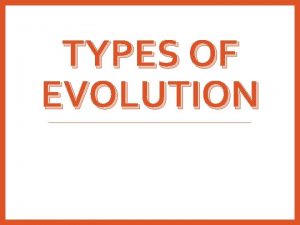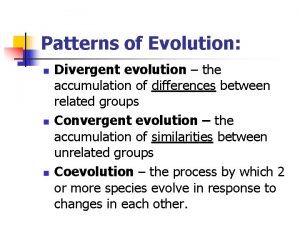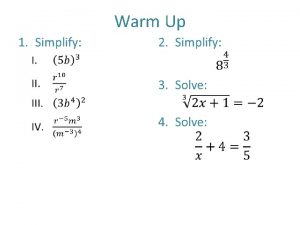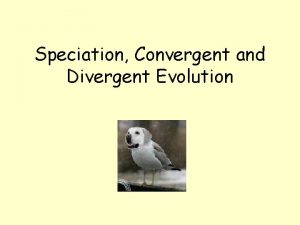Modeling Divergent Evolution Warm Up Set up your


















- Slides: 18

Modeling Divergent Evolution

Warm Up: Set up your notes in your notebook Page: 55 Title: Cladograms Date: 1/18 EQ: How can I model divergent evolution Standard: B 8 B Categorize organisms using a hierarchical classification system based on similarities and differences shared among groups

Standard: B 8 B Categorize organisms using a hierarchical classification system based on similarities and differences shared among groups ESSENTIAL QUESTION: HOW CAN I MODEL DIVERGENT EVOLUTION?

Cladograms by Bozeman

�Divergent evolution describes evolution toward different traits in closely related species. �Divergent evolution can lead to speciation. kit fox red fox ancestor

EVOLUTIONARY CLASSIFICATION � Biologists group organisms into categories that represent lines of evolutionary descent, or phylogeny, not just physical similarities. � What is Phylogeny: Phylogeny The study of evolutionary relationships among organisms.

Cladograms A B C D E F Clade or lineage Speciation: formation of two new species from one T I M E

Classification using Cladograms are diagrams that use derived characteristics to illustrate evolutionary relationships. What is a Clade: A group of organisms, such as a species, species whose members share homologous features derived from a common ancestor

Classification using Cladograms A B C D E F Clade or lineage Speciation: formation of two new species from one T I M E

Classification using Cladograms The cladogram on the next slide shows the evolutionary relationship among several vertebrates.

Classification using Cladograms Hagfish Fish Lizard Frog Mouse Pigeon Chimp Feathers Fur & Mammary Glands Speciation: formation of two new species from one Lungs Jaws Claws or Nails Derived Characteristics


Cladogram Mini Lab Derived Trait Hole in Hip socket A Yes B Yes Dinosaurs C D E Yes Yes Extension of pubis bone No No No Yes Yes Unequal enamel on teeth No No Yes Yes Skull has “shelf” in back No No No Yes Grasping Hands Yes Yes No No Three- Toed Foot Yes No No No F Yes G Yes

Rodents & Rabbits Primates Sharks Ray finned fishes Crocodiles Amphibians 5 6 4 Two 3 2 Vertebra 1 Dinosaurs

A B C D E F G 6 3 Three – Toed Hind Food 5 2 Grasping Hand 4 1

Complete your cladogram assignment by the end of class CHAMPS C- TALK WITH THE PERSON NEXT TO YOU ONLY H- RAISE YOUR HAND WAIT PATIENTLY A- WORK ON THE ASSIGNMENT UNTIL IT IS COMPLETE M- STAY IN YOUR SEAT UNLESS YOU NEED TO SHARPEN YOUR PENCIL P- COMPLETE THE ACTIVITY AND HELP YOUR PARTNER

For 1 -8 Segmented Body Abdominal appendages Crushing Mouthparts

What do the lizard, pigeon, mouse, and chimp all have in common?
 Divergent evolution examples
Divergent evolution examples Divergent evolution definition
Divergent evolution definition Is adaptive radiation divergent evolution
Is adaptive radiation divergent evolution Divergent evolution vs adaptive radiation
Divergent evolution vs adaptive radiation The different types of natural selection
The different types of natural selection Is adaptive radiation divergent evolution
Is adaptive radiation divergent evolution Diverging evolution
Diverging evolution Sympatric species
Sympatric species Divergent evolution
Divergent evolution Divergent evolution
Divergent evolution Give other examples of homologous structures
Give other examples of homologous structures Monophyletic group
Monophyletic group Divergent evolution
Divergent evolution Total set awareness set consideration set
Total set awareness set consideration set Training set validation set test set
Training set validation set test set Helen c. erickson
Helen c. erickson Relational vs dimensional data modeling
Relational vs dimensional data modeling Give us your hungry your tired your poor
Give us your hungry your tired your poor Bounded set vs centered set
Bounded set vs centered set
